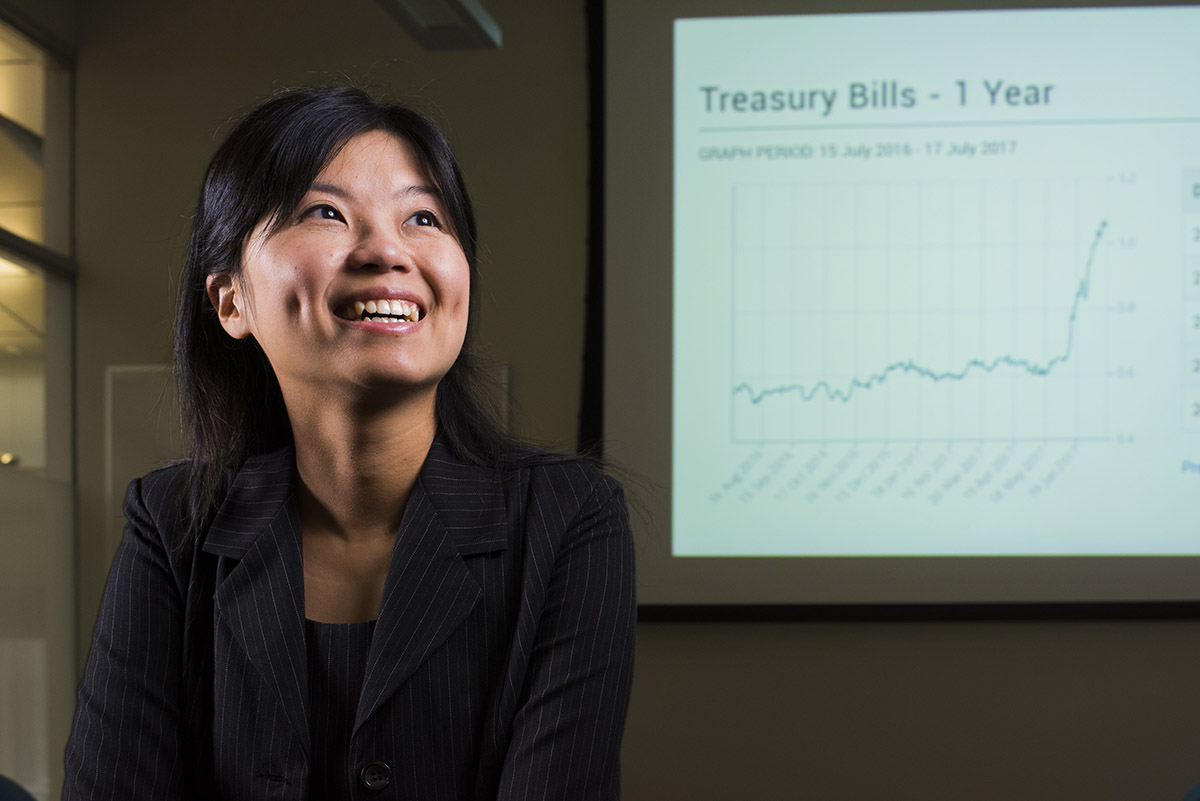
Rosana Fok is an instructor in the Department of Mathematical and Statistical Sciences. Photo credit: John Ulan
What do you teach?
I teach a large variety of undergraduate courses offered by the Department of Mathematical and Statistical Sciences, including calculus, mathematical finance, statistics, life contingency, and casualty insurance. In the past few years, I have been focusing on first-year statistics, and I am also the course coordinator for STAT 151.
Why should people learn about this area?
Mathematics and statistics are very practical subjects. Everyone uses mathematics and statistics every day without even noticing it. When people learn mathematical and statistical tools, they can see how powerful these tools can be in order to answer questions that cannot be answered otherwise.
What are some of its real-world applications?
Mathematics and statistics are applied to a wide variety of fields, including business, politics, biology, medicine, psychology, engineering, and more. My area of interest is mathematical finance and actuarial science. In fact, these two areas relate to everyone in their daily life. Whenever people deposit money into a savings account, get a mortgage, and buy or sell investments, they all involve mathematics and statistics.
In a business world, whenever companies make a prediction, such as forecasting the stock market, sophisticated mathematical and statistical models are used. For insurance companies, whenever they have to estimate how much premium to charge for their insurance policies, they would use mathematical and statistical modelling techniques to determine a premium that can help them remain competitive, while ensuring their risk level is adequate, and avoid bankruptcy.
Thus, mathematics and statistics are practical topics that are used in a wide variety of real-world applications.
What's the coolest thing about this subject area?
The coolest thing about mathematics and statistics is that people have used it since they were a child. For example, when a child borrows $5 from his friend and he promises to return the money the next day with a chocolate bar, the children are already using basic mathematical finance techniques, in that a chocolate bar is the daily interest paid for the money borrowed.
What kinds of unique or innovative learning experiences do you offer your students? What's the value in offering students these opportunities?
In general, I teach most courses by first teaching the theory and then followed by many examples to support the theory. Sometimes I feel that just giving examples may not be enough, so I make the course more practical by introducing group projects, so that students would be able to understand what the industry may be expecting. For example, I created a project asking students to pretend they are working as an analyst in an insurance company, and I am their boss. They then have to analyze the company's data and tell me whether any of the insurance policies need to be revised. Through this group project, the students learned how to apply what they learned from the lecture and how to summarize and carry out detailed analysis to the raw data creating a professional report for presentation. I was pleasantly surprised to find out students are very creative and show strong understanding of the materials through collaboration with their group members. I believe that's the advantage of a group project.
What was your favourite learning experience as an undergrad, and how do you incorporate that experience into teaching your students?
When I was an undergrad, I found courses that were taught with many examples were easier to understand. Thus, I am a strong believer in giving examples to support theories in the courses I teach.
What is one thing that people would be surprised to know about you?
There are three things I enjoy doing: eat, shop, and travel. Thus, whenever I go on my vacation, I usually eat and shop a lot. I also like eating snacks. In fact, while I am typing the answers to these questions, I have already consumed half a bag of popcorn and one bag of beef jerky.